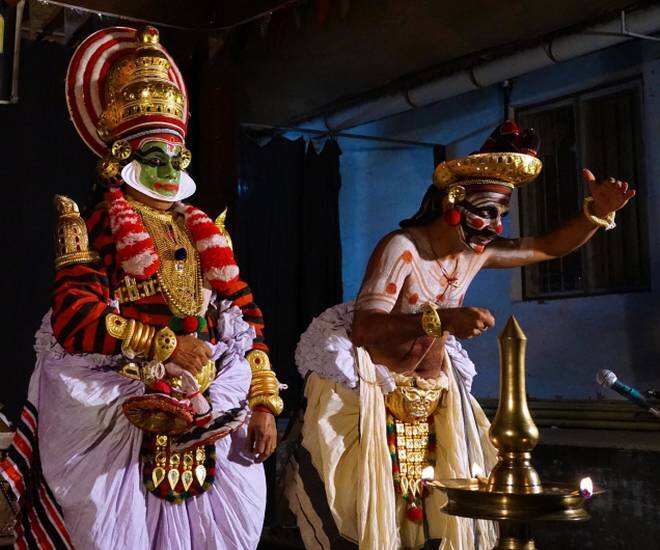Important Facts For Prelims
Kutiyattam
- 21 Jun 2019
- 2 min read
Kapila Venu recently played a composition “Parvati Viraham”, part of the age-old repertoire of Kutiyattam, at Jawaharlal Nehru University in Delhi.
- Kutiyattam is one of the oldest traditional theatre forms of Kerala and is based on Sanskrit theatre traditions.

- The word “kuti” in Malayalam language primarily means “combined” or “together”, and “attam” means “acting”: therefore, the word “kutiyattam” means “combined acting".
- In its stylized and codified theatrical language, netra abhinaya (eye expression) and hasta abhinaya (the language of gestures) are prominent. They focus on the thoughts and feelings of the main character.
- It is traditionally performed in theatres called Kuttampalams, which are located in the Hindu temples.
- Kutiyattam is performed by a community of male actors called Chakyars and female performers called Nangiars, assisted by drummers called Nambiars.
- Pakarnattam is an aspect of Kutiyattam that involves embodying and emoting male and female roles. Switching between the masculine and feminine and interpreting multiple roles at the same time is considered a challenging skill within the repertoire.
- Nangiar Koothu is the solo section of female performance in Kutiyattam.
- Kutiyattam includes the plays of almost all the major playwrights in Sanskrit, including Bhasa, Harsha, Saktibhadra, Kulasekhara, Neelakantha, Bodhayana and Mahendravikramavarman. However, notable exceptions are Kalidasa and Bhavabhuti, whose plays are not traditionally part of its repertoire.
- Kutiyattam has been declared as among the Masterpieces of the Oral and Intangible Heritage of Humanity by UNESCO.




